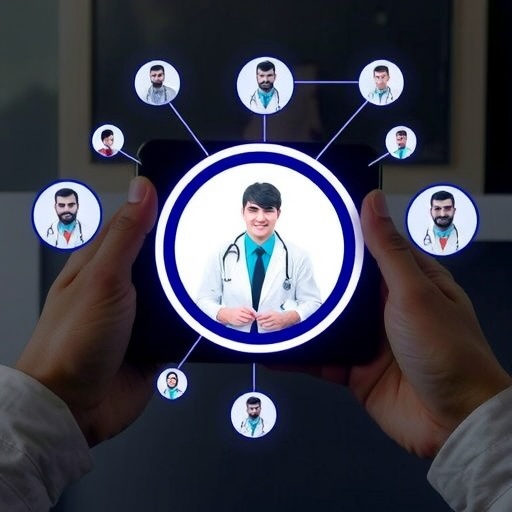In a recent study that sheds light on an increasingly important aspect of modern healthcare, researchers have delved into the realm of telemedicine literacy among medical students and clinicians in Islamabad. As technology continues to revolutionize various sectors, its influence on healthcare is particularly notable. The emergence of telemedicine—a practice that allows healthcare delivery via digital platforms—has been accelerated, particularly in the wake of global health emergencies such as the COVID-19 pandemic. This trend prompted the team of researchers to explore awareness and experiences related to telemedicine within this demographic, providing crucial insights into its impact on healthcare education and practice.
The study, conducted by M. Mansoor, A. Butt, and R. Sarfraz, utilized an explanatory sequential mixed-method approach. This methodology combines quantitative and qualitative research techniques, allowing for a comprehensive analysis of how medical students and practitioners perceive and engage with telemedicine. By employing structured surveys followed by in-depth interviews, the researchers aimed to capture a nuanced understanding of telemedicine literacy, filling a vital gap in existing literature.
The findings reveal that a significant portion of respondents exhibit varying levels of familiarity with telemedicine practices. While many students expressed a degree of awareness, the depth of understanding and practical experience varied considerably. This inconsistency often resulted from discrepancies in educational curricula and exposure to telemedicine during training. Interestingly, clinicians reported a higher level of engagement with telemedicine platforms, which often stemmed from the necessity to adapt to the changing healthcare landscape during the pandemic.
One of the most striking revelations of the study was the prevalent misconception that telemedicine is solely focused on video consultations. While video calls form a crucial component of telemedicine, the researchers emphasized that it encapsulates a broader spectrum of technologies and services, including remote monitoring, mobile health applications, and asynchronous communication. This misunderstanding among students and clinicians underscores the need for comprehensive educational initiatives aimed at demystifying telemedicine and its various applications.
Moreover, the researchers noted that while the use of telemedicine was viewed favorably by many, significant barriers still hinder its widespread adoption. Issues of technological accessibility, particularly in under-resourced areas, were highlighted as a major concern. Additionally, the participants voiced concerns regarding the quality of patient interactions during virtual consultations, fearing that non-verbal cues and the overall human connection may be compromised. Such sentiments indicate a critical need for training that equips future healthcare providers with the skills necessary to navigate these challenges effectively.
The mixed-method approach employed in this research allows for an impressive depth of data collection and analysis. Quantitative metrics derived from surveys provided a broad overview, while qualitative interviews contributed personal narratives that enriched the findings. This dual approach ensures a holistic view of telemedicine literacy, as it illustrates not only the statistical prevalence of awareness but also the stories and insights that give context to the numbers. The convergence of these methodologies lends credence to the study’s conclusions and emphasizes the need for multifaceted educational strategies.
In addressing the educational implications of the study, it is evident that medical institutions must integrate telemedicine literacy into their curricula systematically. By doing so, they can empower the next generation of healthcare providers with the necessary skills to thrive in an increasingly digital healthcare environment. Collaborative efforts between academic institutions and telemedicine platforms could also enhance learning opportunities, offering students practical experience and exposure as part of their training.
Furthermore, this research aligns with global healthcare trends advocating for the integration of technology into patient care. As telemedicine continues to evolve, it creates opportunities for enhanced healthcare delivery, efficient use of resources, and expanded access to care, particularly in rural and underserved areas. By emphasizing the importance of telemedicine literacy, the study encourages a proactive stance on adopting and refining these technologies in medical education.
Overall, the findings of this research resonate well with ongoing discussions in the healthcare arena, highlighting a potentially transformative facet of care delivery. As telemedicine becomes a staple in modern healthcare, educating medical students and practicing clinicians on its intricacies is not merely beneficial; it is essential. By fostering a nuanced understanding of telemedicine, the healthcare community can better prepare for future challenges and embrace the opportunities that lie ahead.
Stakeholders at various levels, including policymakers and educators, are now urged to consider the implications of this study. The clear call to action is to prioritize telemedicine education and training, ensuring that healthcare providers are well-equipped to leverage technology to improve patient outcomes. With ongoing advancements in telehealth technology and infrastructure, a well-informed workforce is key to navigating the future of healthcare effectively.
As this research continues to circulate within academic, clinical, and policy-making circles, it has the potential to catalyze meaningful discussions and actions. The discourse surrounding telemedicine literacy is one that deserves rigorous examination and innovation, and the collective efforts across medical education and practice can lead to substantial improvements in efficiency, accessibility, and quality of care.
In conclusion, the exploratory study by Mansoor, Butt, and Sarfraz stands as a crucial contribution to understanding telemedicine literacy in Islamabad’s healthcare context—a microcosm that reflects broader global trends. Its implications extend beyond the immediate findings and encourage a rethinking of how healthcare education can adapt to embrace the digital era, facilitating a shift towards a more inclusive, technologically adept healthcare system.
Subject of Research: Telemedicine literacy among medical students and clinicians in Islamabad
Article Title: Telemedicine literacy: an explanatory sequential mixed-method inquiry into awareness and experiences of medical students and clinicians in Islamabad.
Article References:
Mansoor, M., Butt, A., Sarfraz, R. et al. Telemedicine literacy: an explanatory sequential mixed-method inquiry into awareness and experiences of medical students and clinicians in Islamabad.
BMC Med Educ 25, 1632 (2025). https://doi.org/10.1186/s12909-025-08102-w
Image Credits: AI Generated
DOI: https://doi.org/10.1186/s12909-025-08102-w
Keywords: Telemedicine, healthcare education, medical students, clinicians, literacy, mixed-method research, Islamabad.




